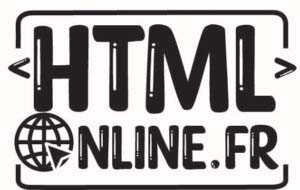1911 09606 An Introduction to Symbolic Artificial Intelligence Applied to Multimedia
For those unfamiliar with computer science, it can be overwhelming to try and grasp the many facets of artificial intelligence and their implications. Here, we break down what artificial intelligence is, how it works, the difference between machine learning, deep learning, natural language processing and more. Symbolic AI is reasoning oriented field that relies on classical logic (usually monotonic) and assumes that logic makes machines intelligent. Regarding implementing symbolic AI, one of the oldest, yet still, the most popular, logic programming languages is Prolog comes in handy. Prolog has its roots in first-order logic, a formal logic, and unlike many other programming languages. Like other hybrid AI models, MIT’s works by splitting up the task.
The Future of AI in Hybrid: Challenges & Opportunities – TechFunnel
The Future of AI in Hybrid: Challenges & Opportunities.
Posted: Mon, 16 Oct 2023 07:00:00 GMT [source]
Neuro-symbolic artificial intelligence can be defined as the subfield of artificial intelligence (AI) that combines neural and symbolic approaches. By symbolic we mean approaches that rely on the explicit representation of knowledge using formal languages—including formal logic—and the manipulation of language items (‘symbols’) by algorithms to achieve a goal. Neuro-symbolic AI has a long history; however, it remained a rather niche topic until recently, when landmark advances in machine learning—prompted by deep learning—caused a significant rise in interest and research activity in combining neural and symbolic methods. In this overview, we provide a rough guide to key research directions, and literature pointers for anybody interested in learning more about the field. The Symbolic AI paradigm led to seminal ideas in search, symbolic programming languages, agents, multi-agent systems, the semantic web, and the strengths and limitations of formal knowledge and reasoning systems. Complex problem solving through coupling of deep learning and symbolic components.
Artificial general intelligence
In addition, areas that rely on procedural or implicit knowledge such as sensory/motor processes, are much more difficult to handle within the Symbolic AI framework. In these fields, Symbolic AI has had limited success and by and large has left the field to neural network architectures (discussed in a later chapter) which are more suitable for such tasks. In sections to follow we will elaborate on important sub-areas of Symbolic AI as well as difficulties encountered by this approach. Similar to the problems in handling dynamic domains, common-sense reasoning is also difficult to capture in formal reasoning.
A more flexible kind of problem-solving occurs when reasoning about what to do next occurs, rather than simply choosing one of the available actions. This kind of meta-level reasoning is used in Soar and in the BB1 blackboard architecture. Japan championed Prolog for its Fifth Generation Project, intending to build special hardware for high performance. Similarly, LISP machines were built to run LISP, but as the second AI boom turned to bust these companies could not compete with new workstations that could now run LISP or Prolog natively at comparable speeds.
In-memory factorization of holographic perceptual representations
As a subset of first-order logic Prolog was based on Horn clauses with a closed-world assumption—any facts not known were considered false—and a unique name assumption for primitive terms—e.g., the identifier barack_obama was considered to refer to exactly one object. Key to the team’s approach is a perception module that translates the image into an object-based representation, making the programs easier to execute. Also unique is what they call curriculum learning, or selectively training the model on concepts and scenes that grow progressively more difficult. It turns out that feeding the machine data in a logical way, rather than haphazardly, helps the model learn faster while improving accuracy.
Adding a symbolic layer can open the black box, explaining the growing interest in hybrid AI systems. Samuel’s Checker Program[1952] — Arthur Samuel’s goal was to explore to make a computer learn. The program improved as it played more and more games and ultimately defeated its own creator. In 1959, it defeated the best player, This created a fear of AI dominating AI.
In contrast to the US, in Europe the key AI programming language during that same period was Prolog. Prolog provided a built-in store of facts and clauses that could be queried by a read-eval-print loop. The store could act as a knowledge base and the clauses could act as rules or a restricted form of logic.
Trained on pictures of birds and other animals or objects, the machine learns to distinguish between them by being exposed to unique avian features such as wings and beaks. Deep learning and machine learning are sometimes used interchangeably, but there is a difference. Ensuring the responsible development of AI is crucial for its safe, trustworthy and ethical advancement. But how can transparency and explainability be addressed in the context of responsible AI? These concepts are discussed in detail in our article on building a responsible artificial intelligence.
This is especially important as AI becomes more integrated into various industries and applications. Opposing Chomsky’s views that a human is born with Universal Grammar, a kind of knowledge, John Locke[1632–1704] postulated that mind is a blank slate or tabula rasa. René Descartes, a mathematician, and philosopher, regarded thoughts themselves as symbolic representations and Perception as an internal process. The grandfather of AI, Thomas Hobbes said — symbolic artificial intelligence Thinking is manipulation of symbols and Reasoning is computation. The justice system, banks, and private companies use algorithms to make decisions that have profound impacts on people’s lives. Unfortunately, those algorithms are sometimes biased — disproportionately impacting people of color as well as individuals in lower income classes when they apply for loans or jobs, or even when courts decide what bail should be set while a person awaits trial.

